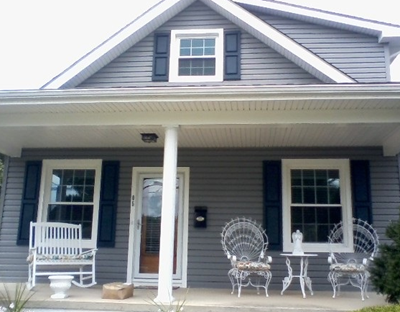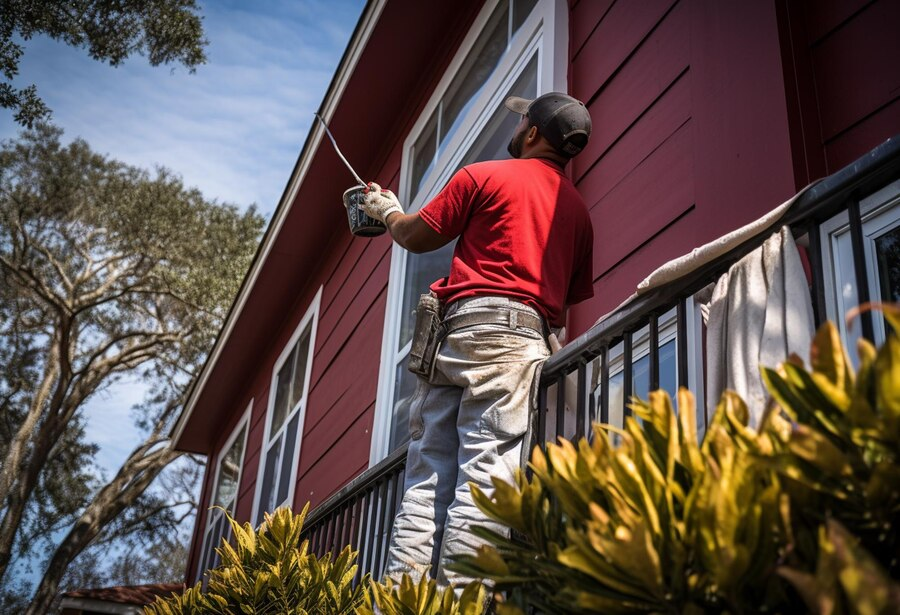
Siding: Protecting Your Home from Weather Damage
When it comes to safeguarding your home from the elements, siding plays a critical role. Think of siding as your home’s outer shield—a protective layer that not only enhances curb appeal but also defends your home against rain, wind, snow, and the scorching sun. In this comprehensive guide, we’ll dive into everything you need to know about siding, from types and benefits to installation and maintenance tips, ensuring that your home remains resilient against weather damage.
Understanding Siding and Its Purpose
Siding is the material applied to the exterior walls of your home, serving as a crucial barrier against the elements. Its primary function is to protect the structural integrity of your house by shielding it from rain, wind, snow, and UV rays, which can cause damage over time. In addition to this protective role, siding enhances your home’s insulation, helping to regulate indoor temperatures and potentially lowering your energy bills. Furthermore, siding contributes significantly to your home’s curb appeal, offering a range of styles and colors to suit various architectural designs. Overall, siding is essential for both functionality and aesthetic enhancement.

Why Siding Matters
Without siding, your home would be exposed to the elements, leading to potential damage such as rot, mold, and structural decay. Quality siding acts as a barrier, preventing moisture from seeping into your walls and causing damage. It also helps to regulate your home’s temperature by providing an additional layer of insulation, which can lead to lower energy bills.
Types of Siding Materials
There’s no one-size-fits-all when it comes to siding materials. Each type offers unique benefits and suits different needs and preferences. Here’s a rundown of the most popular siding options:
Vinyl siding is a popular choice for its durability, low maintenance, and cost-effectiveness. Constructed from PVC, it resists moisture, insects, and fading, making it a practical option for various climates. Available in numerous colors and styles, including horizontal panels, vertical panels, shakes, and shingles, vinyl siding enhances both function and aesthetics.
Wood Siding
Wood siding offers a timeless, natural look that adds character to any home. Available in styles like clapboard, shingle, and shake, it can be painted or stained to achieve your desired appearance. While it requires regular maintenance to prevent rot and pests, wood siding provides excellent insulation and classic charm.
Fiber Cement Siding
Fiber cement siding combines cement, sand, and cellulose fibers to create a robust and versatile material. It effectively mimics the appearance of wood, stucco, or masonry without the extensive maintenance. Known for its durability and resistance to fire, insects, and rot, fiber cement siding is a practical choice for various architectural styles.
Stucco Siding
Stucco siding is a plaster-based finish applied over a mesh base, offering a seamless and durable surface. It is particularly well-suited for dry climates due to its resilience and insulating properties. Stucco can be customized with various textures and colors, making it a versatile option for enhancing a home’s exterior.
Metal Siding
Metal siding, including aluminum and steel, is renowned for its strength and resistance to weather-related damage. Ideal for modern homes, it provides a sleek, durable finish that can withstand harsh elements. Available in various styles and finishes, metal siding is low maintenance and contributes to a contemporary aesthetic.
Benefits of Quality Siding
Investing in quality siding provides several benefits beyond just protection from the elements:
Siding greatly influences the visual attractiveness of your home. Selecting a siding style and color that complements your home’s architectural design can significantly boost its curb appeal. A well-chosen siding not only improves the overall look of your property but can also increase its market value and appeal to potential buyers.
High-quality siding enhances your home’s energy efficiency by adding an extra layer of insulation. This improved insulation helps to maintain a stable indoor temperature, reducing the strain on heating and cooling systems. As a result, you can expect lower energy bills and a more comfortable living environment throughout the year.
Low Maintenance
Modern siding materials like vinyl and fiber cement are designed to require minimal upkeep. These materials resist common issues such as fading, warping, or pest damage, which means you spend less time and money on maintenance. This low-maintenance aspect makes them a practical choice for homeowners seeking durability and convenience.
Protection from the Elements
Effective siding acts as a protective barrier against various weather conditions, including rain, wind, snow, and UV rays. By shielding your home’s structure from these elements, siding helps prevent potential damage such as rot, mold, and deterioration, ensuring the longevity and integrity of your home’s exterior.
Siding Installation: What to Expect
Proper installation is crucial for ensuring that your siding performs its job effectively. Here’s what you can expect during the installation process:
Preparation
Before starting the installation, your contractor will thoroughly evaluate your home’s exterior. This includes removing any old siding and addressing underlying issues such as structural damage or rot. The surface will be cleaned and dried to ensure a proper base for the new siding, setting the stage for a successful installation.
Installation
The installation procedure varies based on the siding material you select. For vinyl siding, panels are secured to the wall using nails or clips, while wood siding requires precise cutting and nailing to ensure a snug fit. The contractor will adhere to manufacturer guidelines to guarantee optimal performance and appearance.
Finishing Touches
After the main installation is complete, the contractor will attend to finishing details. This includes caulking any gaps to prevent moisture infiltration, painting if necessary, and sealing to enhance durability. They will also clean the work area thoroughly, removing debris and ensuring that the installation meets quality standards.
Siding Maintenance and Care
Maintaining your siding helps to extend its lifespan and keep your home looking its best. Here are some general maintenance tips for different types of siding:
Vinyl Siding
- Cleaning: Use a mild detergent and water to clean vinyl siding. A pressure washer can be used, but avoid using high pressure to prevent damage.
- Inspection: Regularly inspect for cracks or damage and address any issues promptly.
Wood Siding
- Painting/Staining: Repaint or restain wood siding every few years to protect it from moisture and UV damage.
- Inspection: Check for signs of rot, mold, or pest infestations and address them immediately.
Fiber Cement Siding
- Cleaning: Use a hose and mild detergent to clean fiber cement siding. Avoid using abrasive cleaners or pressure washers.
- Inspection: Look for cracks or loose panels and repair as needed.
Stucco Siding
- Cleaning: Clean stucco with a soft brush or low-pressure washer. Avoid harsh chemicals that can damage the finish.
- Inspection: Check for cracks or damage and repair them promptly to prevent water infiltration.
Metal Siding
- Cleaning: Wash metal siding with a mild detergent and water. Avoid using abrasive cleaners that can scratch the surface.
- Inspection: Inspect for dents or scratches and address any issues to prevent rust or corrosion.
Choosing the Right Siding for Your Home
Selecting the ideal siding for your home involves considering several key factors, including your local climate, personal aesthetic preferences, and budget. Different siding materials offer varying levels of durability and insulation, which can affect their performance in specific weather conditions. For example, fiber cement and metal siding are excellent for extreme weather, while wood siding might be better suited for milder climates. Additionally, the style and color of the siding should complement your home’s architectural design to enhance its curb appeal.
Consulting with a professional is essential in making an informed choice. They can assess your home’s unique requirements and provide expert recommendations based on their experience. A professional can also guide you through the various options, ensuring that you select siding that meets your needs for durability, maintenance, and aesthetic appeal while staying within your budget.
Conclusion
Selecting the right siding is essential for safeguarding your home from weather damage while enhancing its visual appeal. With a range of materials available, each offering distinct advantages, it’s important to evaluate options based on climate, aesthetics, and budget. Quality siding not only protects against the elements but also improves energy efficiency and boosts curb appeal. EZ Window Solutions of Beachwood provides expert guidance and professional installation to ensure the best siding choice for your home. For reliable advice and top-notch service, contact EZ Window Solutions of Beachwood at (440) 773-4396. Upgrading your siding with professional help will ensure lasting protection and elevate your home’s overall look and performance.


Write a Comment